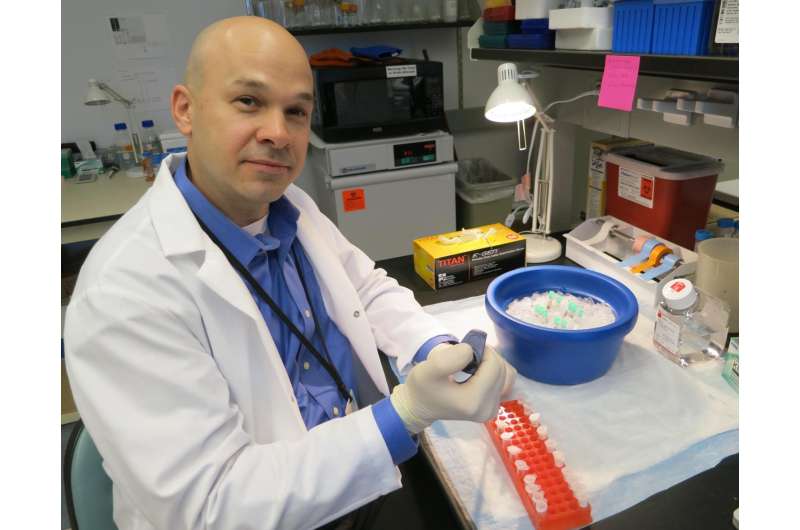Creative approach to probing genome IDs genes that likely influence bone strength

In an important step in the battle against osteoporosis, a serious brittle bone disease that affects millions, researchers have identified more than a dozen genes amid the vast human genome likely responsible for bone density and strength. The crafty approach the researchers used to find these genes - essentially identifying needles in a haystack - could speed the development of new and better treatments for osteoporosis and many other diseases.
Narrowing the Focus
Scientists seeking to map out the human genome face a challenge akin to that faced by the astronomer peering into the night sky: The places to look and explore are almost endless. So when hunting for something specific - in this case, the genes responsible for bone density - the question becomes: Where to begin? The researchers decided the first thing to do was to figure out an answer to that question, and their approach paid big dividends.
In charting the genome, scientists commonly rely on what are known as genome-wide association studies, or GWAS. These studies identify locations in the genome where genes associated with a certain disease are thought to be located. The problem, though, is that GWAS alone doesn't tell them which genes are truly influencing a disease. "What's really challenging is going that next step and figuring out which genes are responsible," said researcher Charles Farber, PhD, of the University of Virginia School of Medicine's Center for Public Health Genomics. "It's similar to dropping a pin on a map app. So the GWAS drops the pin, but it doesn't tell you anything about what's going on at that location, the mechanism through which genetic variants influence a disease."
Farber's team, including researchers at the University of Maryland, Yale and Maine Medical Center Research Institute, wanted to go beyond GWAS. So they identified genes that appeared to work together, and then they mapped those genes onto the locations identified by GWAS. By cross-referencing the two, they were able to predict 33 genes that they believe are responsible for controlling bone density. Eighteen of the genes had been shown previously to play a role, but the other 15 were new. "Many were genes known to have a role in the regulation of bone mineral density. In fact, over half of them were," Farber noted. "So that was a good proof of principle."
Validation
The researchers have since tested two of the previously unknown genes and confirmed that they contribute to controlling bone mineral density. The researchers don't expect their predictions will have a 100 percent success rate, but they believe the technique has great promise for helping accelerate the process of determining gene function. And by more quickly understanding gene function, they accelerate the process of developing new drugs to target those genes to treat disease.
"This was a way that we could take existing data and make predictions without going [gene] locus by locus without any direction. At least now we have hypotheses that we can test," Farber said. "I think that will speed up future attempts at trying to figure out which genes are truly causative."
The findings have been published in the scientific journal Cell Systems. The article was authored by Gina Calabrese, Larry D. Mesner, Joseph P. Stains, Steven M. Tommasini, Mark C. Horowitz, Clifford J. Rosen and Farber.
More information: Gina M. Calabrese et al, Integrating GWAS and Co-expression Network Data Identifies Bone Mineral Density Genes SPTBN1 and MARK3 and an Osteoblast Functional Module, Cell Systems (2016). DOI: 10.1016/j.cels.2016.10.014


















